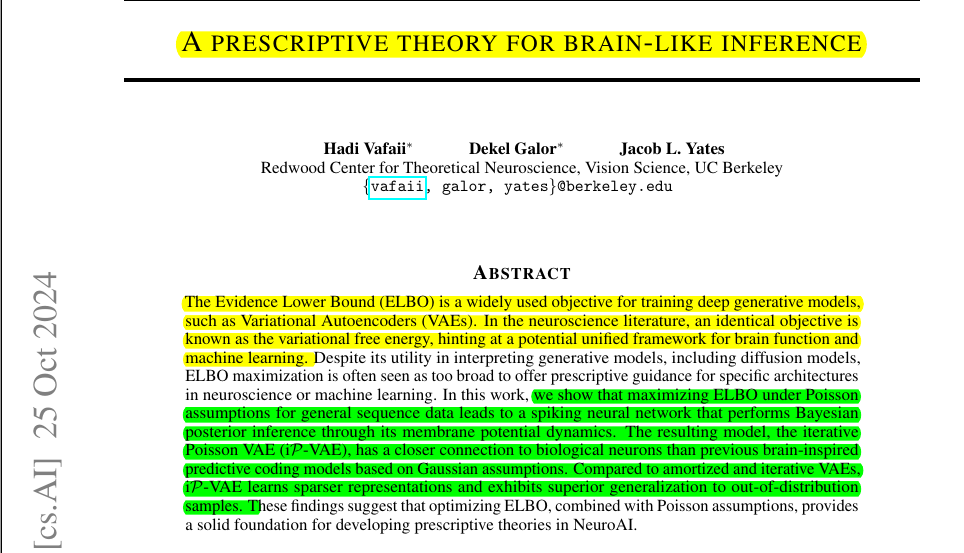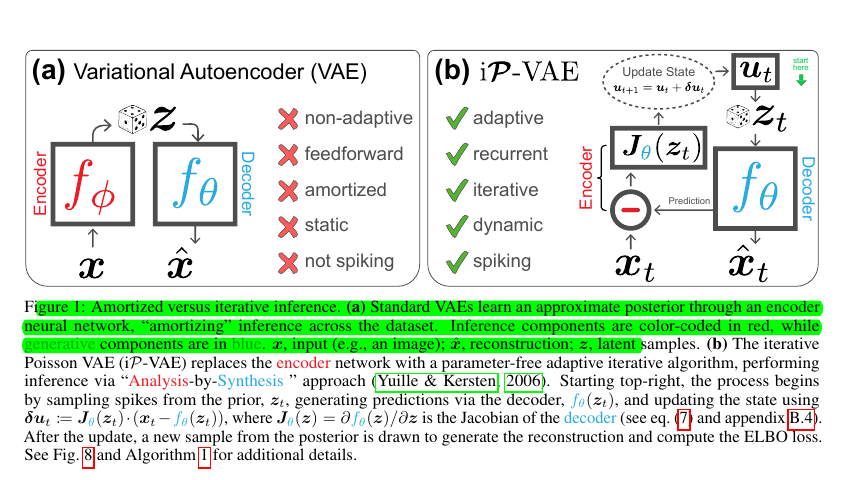A PRESCRIPTIVE THEORY FOR BRAIN - LIKE INFERENCE
A spiking neural network that thinks like a brain and learns like a VAE
A spiking neural network that thinks like a brain and learns like a VAE
Making AI neurons behave more like biological ones through Poisson magic
🎯 Original Problem:
Current brain-inspired AI models struggle to match biological neural behavior, particularly in handling prediction signals and negative firing rates. The challenge lies in developing a model that can perform Bayesian inference while maintaining biological plausibility.
🔧 Solution in this Paper:
• Introduces iP-VAE (iterative Poisson Variational Autoencoder) that performs Bayesian inference through membrane potential dynamics
• Uses Poisson distribution assumptions instead of Gaussian for sequence data
• Implements spiking neural communication without explicit prediction signals
• Features modulatory feedback mechanism aligned with biological neurons
• Reuses weights across iterations for parameter efficiency
• Utilizes sparse integer spike counts for energy-efficient deployment
💡 Key Insights:
• Poisson assumptions in ELBO lead to more biologically accurate neural networks
• Membrane potential dynamics can effectively handle posterior inference
• Iterative processing enables better generalization than one-shot inference
• Sparse representations emerge naturally from the architecture
• The model bridges theoretical neuroscience and practical machine learning
📊 Results:
• Achieves superior reconstruction performance compared to state-of-the-art iterative VAEs
• Demonstrates stable performance across input rotations (0-180 degrees)
• Shows better classification accuracy on novel datasets
• Uses fewer parameters while maintaining performance
• Learns more compositional features than alternative models
💡 The key advantages of iP-VAE over existing models
iP-VAE demonstrates several advantages:
Learns sparser representations
Shows superior generalization to out-of-distribution samples
Uses fewer parameters than alternative models
Converges to sparse posterior representations
Outperforms state-of-the-art iterative VAEs



